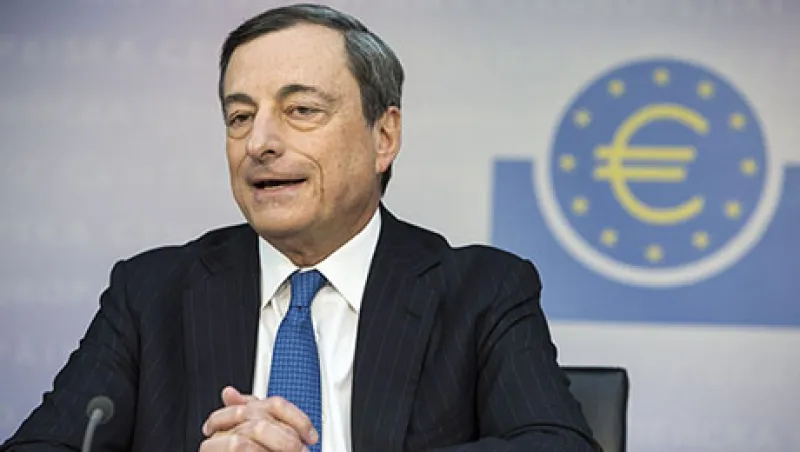In recent months, investment in European bond markets has been dominated by a single question: What’s the best response to the eventual threat of rising central bank policy rates, which will hit the value of bonds in investor portfolios?
One option is an investment strategy that — in theory — is unaffected by changes in interest rates: the buy-and-hold gambit. This involves buying short-term bonds, of two or three years’ duration, and holding them to maturity. By that point, investors hope, central bank rates will have risen to more normal levels and the money can be reinvested in bonds that offer a decent yield.
Buy-and-hold strategies represent a source of freedom, say their advocates. “You don’t have mark-to-market risk between now and the maturity of your fund,” agrees Arnaud Gandon, chief investment officer at Heptagon Capital, an $8.3 billion investment management firm based in London. In January, Heptagon invested in a buy-and-hold fund, maturing in 2017, run by a specialist manager. “You don’t have to estimate the profile and growth of a company over the next six years,” he says of the scheme’s simplicity. “Your job is to ensure the company will be alive in three years’ time.”
Freed from such constraints, Gandon argues, buy-and-hold investors can achieve robust yields by buying the bonds of relatively risky companies, though he says the fund does not buy distressed assets. It invests in European bonds, many in Norway and Sweden, picking up firms’ high-yield debt at an average yield of 7.5 percent. By seeking out small companies that offer an illiquidity premium, Heptagon capitalizes on the fact that in a pure buy-and-hold strategy, in which the investor does not liquidate, illiquidity does not matter. High-yield Nordic countries are attractive because they are backed by strong assets and their markets are relatively small and offer the illiquidity premium. Only one Scandinavian country, Finland, belongs to the euro zone and doesn’t grant such a premium to bondholders.
A variation on the buy-and-hold strategy is “buy-and-hold with common sense attached to it,” in the words of Thomas Becket, the CIO of £2.1 billion ($3.5 billion), London-based Psigma Investment Management, which mandated TwentyFour Asset Management, a £3.3 billion, London-based fixed-income boutique, to set up the buy-and-hold TwentyFour Focus Bond Fund, financed with Psigma clients’ money, in February 2012. By “common sense,” Becket means selling “if bonds get ridiculously expensive” — for example, if they are bought deeply below par because of a crisis in the company or the market but then rise to par or above. Since its launch the £88 million fund has achieved a 26.6 percent cumulative return after charges through buying short-term European bonds with an average credit rating of double-B and an average maturity of 2.25 years. Its present distribution yield, the yield returned to fundholders, is 6.7 percent.
Mark Holman, CEO of TwentyFour Asset Management, says investments made by the specialist manager’s fund include a sterling-denominated bond issued by French financial services group Axa, maturing in July 2016, which offered a yield of 11.23 percent in March 2012, when the euro zone debt and banking crisis was still raging. The fund also holds permanent interest-bearing shares (PIBS) — bonds with no fixed maturity — issued by Nationwide, a U.K. savings and loan mutual that specializes in mortgage lending. The fund bought them in July 2013, when the bonds yielded 10.5 percent after Nationwide failed to meet a 3 percent leverage ratio set by the U.K. financial regulator. Holman says the bonds qualify for the buy-and-hold fund because he expects Nationwide to redeem them in 2016 for regulatory reasons. Despite the high rates locked in on purchase, both businesses are fundamentally stable, he argues, noting that their yields have since fallen considerably as the companies make progress in resolving their financial problems.
Many investors have conceptual criticisms of the buy-and-hold strategy. One is that the trade is very crowded. So many investors have opted to buy short-term bonds, often not as part of a buy-and-hold strategy, that bond rates have been pushed down sharply. There are also concerns about the credit quality of corporates offering short-term debt.
“We are in a very low-yielding environment, so almost all the good companies have extended their debt,” says Jon Jonsson, London-based global fixed-income manager at $247 billion investment management firm Neuberger Berman. “I’m not saying that all the companies that are left are bad credits, but many are. So if you do buy and hold, be sure to have good issue selection.” He forecasts that the rate of defaults, while low at the moment, is likely to climb as companies become more confident about European growth and respond with potentially risky activities such as M&A. According to Jonsson, rising defaults could imperil a buy-and-hold strategy.
Another argument against buy-and-hold is that European central banks’ policy rates may rise extremely slowly, injecting future buoyancy into prices of bonds bought now and therefore mitigating the necessity of holding until maturity to forestall capital loss. The European Central Bank cut rates further on June 5, reducing its main refinancing rate by 10 basis points, to 0.15 percent . The ECB also pushed down rates for overnight deposits to an unprecedented –0.1 percent.
“It would be fantastic for bondholders if policy rates rose very slowly,” says Heptagon’s Gandon, warning that “inflation doesn’t come in small incremental moves. When it starts happening, it happens very quickly.” Central banks that do not raise rates quickly in response to inflationary threats will quickly end up, he predicts, “behind the curve.”
Get more on fixed income.






